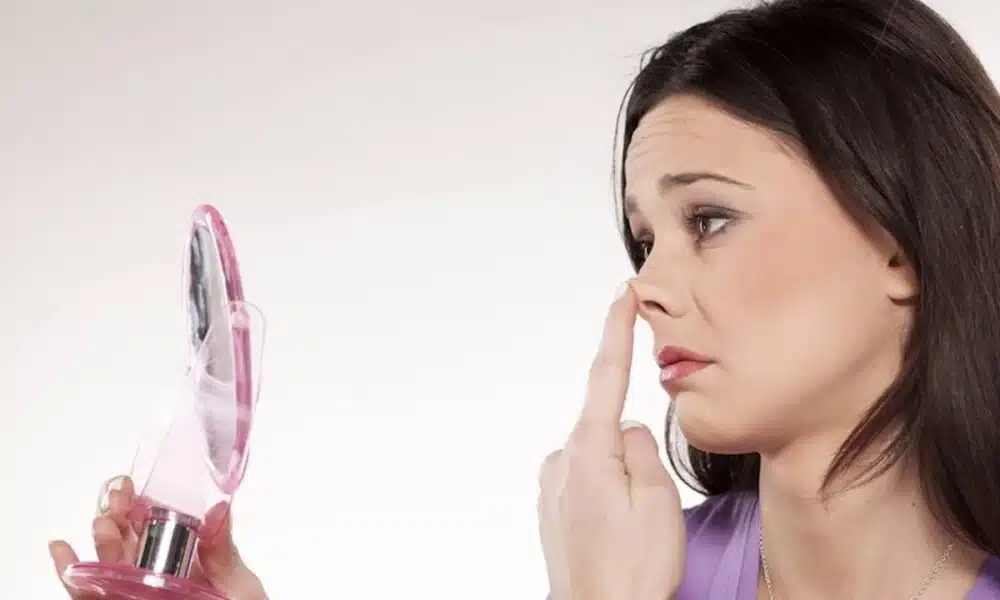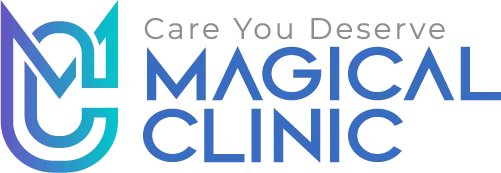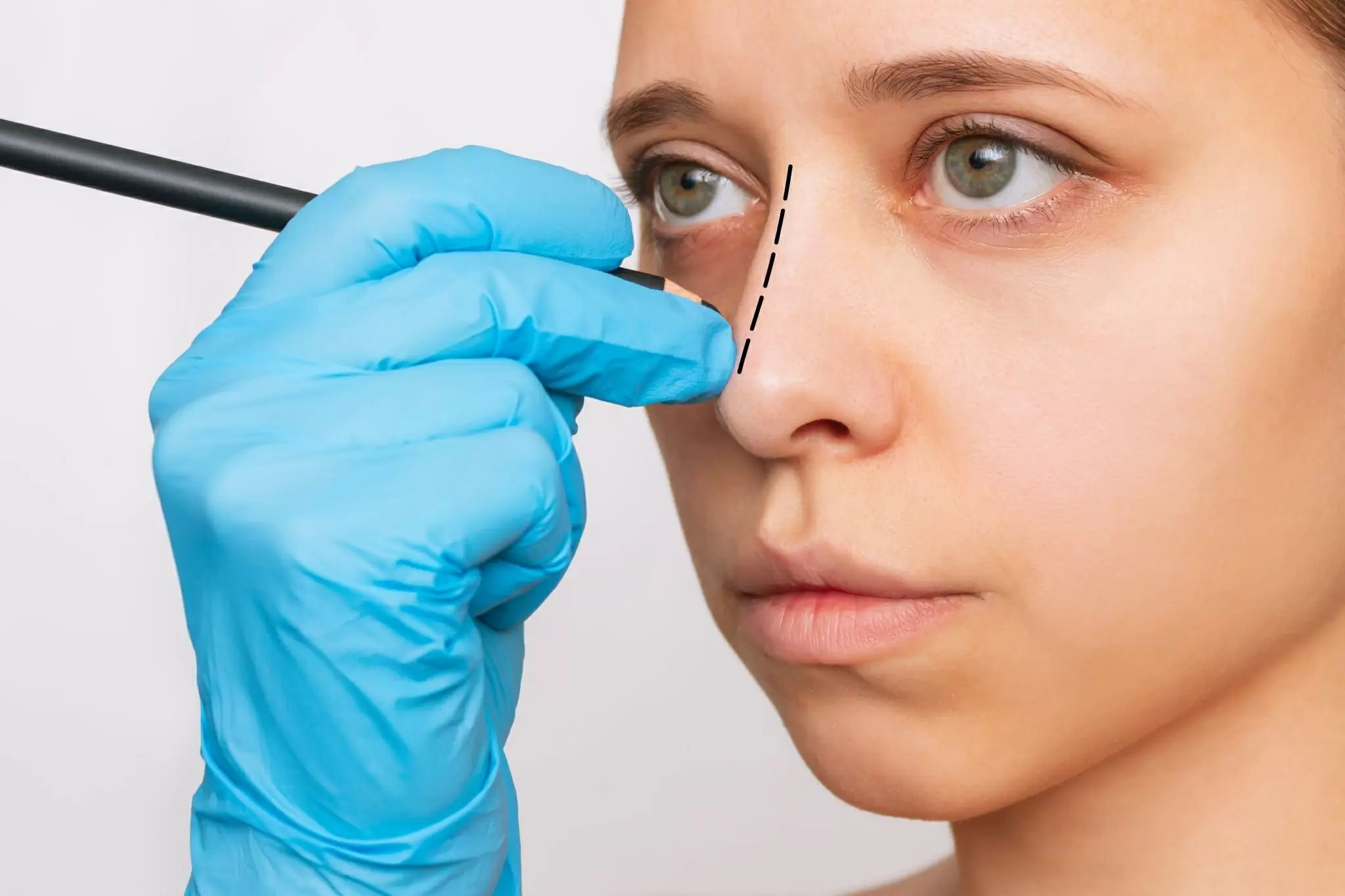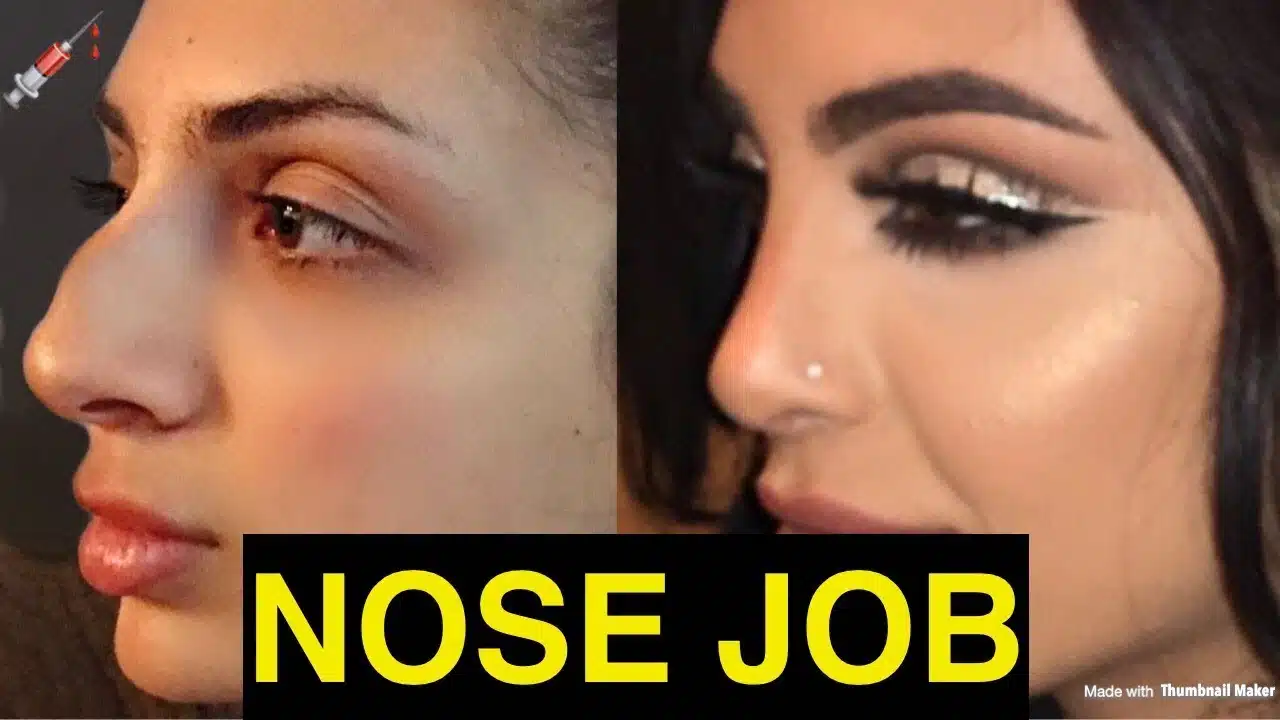How Much Does a Nose Job Cost with Insurance? Affordable Solutions

Wondering how much does a nose job cost with insurance? You’re not alone. Many people who consider rhinoplasty are unsure what’s covered, what’s out-of-pocket, and how to make smart choices. This article magical clinics, will walk you through every step — costs, coverage, expectations, and travel tips — in a clear and conversational way. Let’s start by diving into the average cost breakdown and how insurance plays a role.
how much does a nose job cost with insurance?
When it comes to how much does a nose job cost with insurance, the answer depends on many variables. These include your insurance provider, the reason for the procedure (cosmetic or medical), and even the location of the clinic. On average, a cosmetic nose job can range from $5,000 to $15,000. However, when it involves a medical rhinoplasty, insurance can significantly reduce the price — often cutting it by 50% or more.
If your rhinoplasty is medically necessary — like for a deviated septum or breathing issues — many insurance companies will step in to cover part or most of the costs. But they won’t help if it’s purely for cosmetic reasons. That’s where the distinction between cosmetic and medical rhinoplasty matters. Keep in mind, that even if insurance helps, there might still be deductibles, copays, or anesthesia fees you’ll need to pay.
Understanding the average cost gives you the foundation you need to plan your next steps wisely. Now let’s explore from magical clinics the difference between cosmetic and medical rhinoplasty and how that affects your wallet.
Functional vs. Cosmetic Nose Jobs: What’s Covered?
Not all nose jobs are created equal. While cosmetic rhinoplasty is focused on appearance, medical rhinoplasty is aimed at solving functional problems like chronic nasal congestion, a deviated septum, or breathing difficulties. Insurance companies generally do not cover procedures done for purely aesthetic reasons. However, they often provide coverage for functional procedures. Here are the key differences between cosmetic and functional (medical) rhinoplasty:
- Cosmetic rhinoplasty changes the shape or size of the nose for aesthetic appeal.
- Functional rhinoplasty addresses medical issues such as breathing problems or nasal obstruction.
- Medical rhinoplasty often includes septoplasty, turbinectomy, or valve repair, which may be necessary for healthy nasal function.
- Insurance is more likely to cover surgeries that include documented breathing issues or post-trauma repairs.
- Combination procedures (cosmetic + medical) may receive partial coverage.
This distinction can be the difference between paying thousands out of pocket or getting substantial help from your provider. So what exactly do insurance companies look for when approving a claim? Let’s break it down.
How to Check If Your Insurance Covers a Nose Job
Understanding how much does a nose job cost with insurance starts with knowing if your policy covers it at all. Before committing to any procedure, you’ll want to call your insurance company and get clarity. Every plan is different, but most will have clear criteria for when rhinoplasty qualifies for coverage. To check your coverage properly:
- Contact your insurer and ask if medical rhinoplasty is covered under your plan.
Provide documentation from your ENT (ear, nose, and throat) specialist or plastic surgeon indicating the procedure is medically necessary. - Ask whether pre-authorization is needed and how long that process will take.
- Get estimates in writing for what portion the insurance will pay and what your copay or deductible will be.
Many people are surprised to find that their insurance will pay for more than they expected — especially when the nose job is tied to a breathing issue. Once you confirm coverage, the next logical question is: what are the hidden costs?
Hidden Costs Even If Insurance Covers the Nose Job
You might think that once insurance kicks in, your financial worries are over. But how much does a nose job cost with insurance isn’t always straightforward. There are often hidden expenses that can add up quickly. Even with insurance, some costs fall outside coverage. Before your procedure, consider these hidden charges:
- Surgeon’s fees that exceed your insurance’s “allowed amount”
- Facility or hospital charges if done outside a clinic
- Anesthesia fees, which are sometimes billed separately
- Post-op medication and supplies like saline rinses, pain relievers, or nasal splints
- Follow-up appointments, which may not be fully covered
These can make a major difference in your total out-of-pocket spending. That’s why it’s so important to ask your clinic for a full cost breakdown — preferably in writing. If you want to keep your spending under control, let’s talk about how to lower those costs even more.
How to Reduce the Cost of a Nose Job with Insurance
If you’re trying to minimize how much does a nose job cost with insurance, several strategies can help. Whether you’re eligible for medical rhinoplasty or not, it’s always smart to look for savings. Here are ways to keep your expenses down:
- Choose a surgeon within your insurance network to avoid out-of-network charges
- Get multiple quotes from certified rhinoplasty surgeons
- Schedule during off-peak times when clinics offer seasonal promotions
- Use a flexible spending account (FSA) or health savings account (HSA)
- Inquire about bundled pricing or payment plans from the clinic
Taking a proactive approach to financial planning gives you control and peace of mind. And if you’re looking for a clinic that offers both expertise and affordability, you’ll love what’s coming next.
Why You Should Choose Magical Clinic for Your Nose Job
If you’re still wondering how much does a nose job cost with insurance, Magical Clinic offers both answers and solutions. Known for their award-winning surgeons and high patient satisfaction, this clinic specializes in both cosmetic and medical rhinoplasty. They work closely with major insurance providers and offer in-house financing for those without full coverage.
Magical Clinic goes beyond the typical experience by offering pre-surgery assessments, insurance claim assistance, and state-of-the-art technology for minimal downtime. Whether you’re repairing a deviated septum or enhancing your profile, their team ensures you receive both aesthetic results and functional improvements. Choosing Magical Clinic means peace of mind and professional care from day one.
With the right clinic in your corner, you’re ready to move toward recovery. But how long does that take?
How Long Does a Nose Job Take to Heal?
Recovery is an essential part of planning for how much does a nose job cost with insurance, because downtime can impact your work, travel, and daily routine. Most patients start to feel better after 1–2 weeks, but full recovery can take up to a year depending on the extent of the surgery. Here’s what to expect:
- Swelling and bruising peak within the first 3–4 days and gradually subside
- You’ll wear a nasal splint for about a week
- Light activity can resume after 7–10 days, but avoid strenuous exercise for 4–6 weeks
- Final shape and results may take 6–12 months to fully settle
Planning your recovery time is crucial for a smooth experience. Now let’s explore what happens when your nose job involves correcting a deviated septum — and what that costs.
How Much Does a Nose Job Cost with Deviated Septum?
If you’re dealing with a deviated septum, the question of how much does a nose job cost with insurance becomes more hopeful. Insurance companies often consider deviated septum correction — also known as medical rhinoplasty — to be medically necessary. This means you’re more likely to get partial or full coverage. Here’s what affects the final cost:
- Whether the procedure includes cosmetic changes (which won’t be covered)
- Your insurance plan’s copay, coinsurance, or deductible
Surgeon fees if they are out-of-network - Facility and anesthesia costs, which may not be fully covered
On average, fixing a deviated septum with insurance can bring costs down to $1,500–$3,000 — compared to $10,000+ without coverage. With the costs clearer, let’s now discuss how travel fits into your rhinoplasty journey.
Planning a Trip for how much does a nose job cost with insurance
Believe it or not, many people travel out of town (or even overseas) to reduce how much does a nose job cost with insurance. Some clinics offer specialized packages for out-of-state patients, and if your insurer allows it, you could save thousands — even after travel expenses. When planning a medical trip, consider:
- Choosing a location known for affordable medical rhinoplasty (like Turkey, Mexico, or South Korea)
- Booking accommodations close to the clinic for easy follow-ups
- Asking your insurance if they’ll reimburse any travel costs related to the procedure
- Scheduling enough recovery time before flying or long drives
- Researching online reviews and success rates of your chosen clinic
Traveling for your procedure can be a cost-effective option, but it takes careful planning.
Understanding Insurance Denials and How to Appeal Them
Even if you’re confident your case qualifies, insurance companies can still deny coverage. This can be frustrating, especially when you’re trying to figure out how much does a nose job cost with insurance. But don’t worry — you’re not out of options. Many patients successfully appeal their insurance denials and get reimbursed after providing additional documentation or clarification. Here are the most common reasons for denial and what you can do about them:
- The insurance provider deems the surgery cosmetic rather than medically necessary.
- Insufficient medical documentation or no referral from a specialist.
- The procedure was performed by an out-of-network surgeon without prior authorization.
- The insurance plan has exclusions related to rhinoplasty procedures.
- Missing pre-approval or errors in billing codes from the clinic.
To appeal an insurance denial, first request a written explanation of the denial (called an Explanation of Benefits or EOB). Then gather any supporting documentation — such as ENT evaluations, breathing test results, and surgeon notes — and submit a formal appeal. You may also want to ask your surgeon’s office to assist with this process, as many clinics have staff who specialize in handling insurance claims and appeals.
Navigating insurance denials may feel overwhelming, but persistence can pay off. Many patients who take the time to appeal end up saving thousands of dollars, especially when the procedure involves medical rhinoplasty. Understanding this appeals process adds another tool to your belt when preparing for a rhinoplasty, and it ensures you’re not overpaying when you don’t have to.
Appealing a denial isn’t just about saving money — it’s about getting the care you medically need and ensuring your insurance provider fulfills their part. With that in mind, you’re now fully equipped to make an informed decision. Let’s wrap it up with a final summary of everything you’ve learned.
Now, to make this guide complete, let’s tackle the most commonly asked questions in a detailed FAQ section.
FAQs: how much does a nose job cost with insurance
1. What is the average total cost of a nose job?
The cost of a nose job (rhinoplasty) varies depending on factors like the location, surgeon’s experience, and complexity of the procedure. On average, in the United States, the cost typically ranges from $5,000 to $15,000. In countries like Turkey, the cost can be much lower, ranging from $2,000 to $4,500 due to more affordable medical tourism options.
2. Is a nose job haram?
In Islamic teachings, cosmetic surgeries like rhinoplasty (a nose job) are generally considered haram (forbidden) if done for reasons of vanity or to alter Allah’s creation. However, it can be permissible if the surgery is done for medical reasons, such as correcting a breathing problem or a birth defect, as this is viewed as improving a person’s health and well-being. It’s always best to consult with a knowledgeable religious scholar for personalized guidance.
3. How much does a nose tip surgery cost?
A nose tip surgery, also known as tip plasty, typically costs less than a full rhinoplasty. The cost for a nose tip surgery can range from $2,000 to $5,000 depending on the surgeon’s experience and location. In countries like Turkey, it can be more affordable, usually falling between $1,500 to $3,000.
4. How painful is rhinoplasty?
Rhinoplasty is generally not considered extremely painful, especially since it’s performed under general anesthesia. However, patients can expect some discomfort and swelling during the recovery period. Most people experience mild to moderate pain after the surgery, which can be managed with prescribed painkillers. The pain usually subsides after a few days, though some swelling and bruising may last up to a week or two.
5. How to get a free nose job with a deviated septum?
In some cases, if a deviated septum significantly impacts your breathing or causes other health problems, it may be covered by health insurance. To get a “free” nose job, you would need to prove that the condition is medically necessary, not just cosmetic. A functional rhinoplasty (septoplasty) to fix the deviated septum may be eligible for insurance coverage.
6. Does insurance cover rhinoplasty for a deviated septum?
Yes, insurance often covers rhinoplasty for a deviated septum if the procedure is deemed medically necessary. This typically happens if the deviated septum causes problems such as chronic sinus infections, breathing difficulties, or sleep apnea. However, if you’re seeking rhinoplasty purely for cosmetic reasons, insurance usually won’t cover the cost.
7. How much does a nose job cost with a deviated septum?
If the nose job involves correcting a deviated septum (functional rhinoplasty or septoplasty), the cost may range from $3,000 to $8,000 in the United States. If the procedure is done for cosmetic purposes in addition to medical correction, the price can be higher. In other countries, like Turkey, the cost could be much lower, typically ranging from $2,000 to $4,500.
8. How much does it cost to fix a deviated septum with insurance?
When insurance covers the surgery to fix a deviated septum, the cost to the patient can be significantly reduced or even free (if fully covered). However, you might still be responsible for co-pays, deductibles, or out-of-pocket expenses, depending on your insurance plan. The total surgery cost without insurance can range from $3,000 to $8,000.
9. How long does a nose job take to heal?
The initial healing period for a nose job is typically around 1 to 2 weeks, during which time bruising and swelling will subside. However, full recovery can take up to 6 months to a year, especially for the final shape of the nose to fully set. You can return to normal activities within a couple of weeks, but you should avoid strenuous activities and protect your nose from injury during this time.
Final Thoughts
Now that you’ve explored every angle of how much does a nose job cost with insurance, you’re better equipped to make the right decision. From insurance coverage and medical necessity to travel tips and clinic choices, the power is in your hands. Choose smart, stay informed, and don’t settle for guesswork.
Related Blogs

- April 4, 2025
How much does a nose job.
If you’re curious about reshaping your nose, you’re probably asking: how much does a nose job cost in Turkey ?.
Read More
- May 2, 2025
Cloudy Eyes: Causes, Treatments & Travel.
Glancing in the mirror and seeing cloudy eyes can feel like peering through frosted glass: the world’s colours dim, details.
Read More

